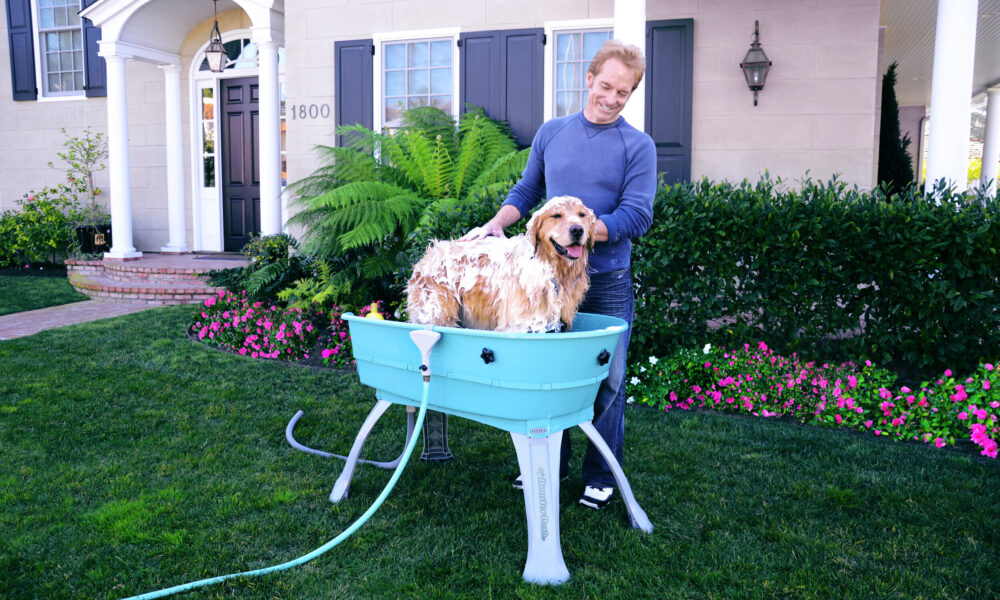Buying a new home is an exciting milestone, but it can quickly turn into a nightmare if underlying issues are overlooked. Discovering problems during a house inspection can save you thousands of dollars and countless headaches down the road.
This post dives into the 9 most common issues found during house inspections. Read on.
The Importance of Home Inspections
Before you sign on the dotted line, a home inspection can reveal hidden issues that aren’t visible during a casual walkthrough. A professional home inspection provides a comprehensive evaluation of the property.
This offers peace of mind and negotiating power for buyers. Understanding what inspectors commonly find can help you better prepare for this crucial step in your home-buying process. Check out Tucson home inspector to learn more about property inspections.
1. Structural Problems
Structural integrity is paramount to the safety and longevity of your home. Inspectors often find issues with the foundation, walls, and roof structure.
Foundation Cracks and Settling
Cracks in the foundation can be a major red flag. While small, hairline cracks might be normal, larger cracks can indicate serious structural problems. These issues could lead to:
- uneven floors
- doors that don’t close properly
- even significant damage over time
Roof Damage
The roof is a home’s first line of defense against the elements. Inspectors frequently find damaged or missing shingles, leaks, and signs of poor installation that could lead to water damage and reduced energy efficiency. Regular maintenance and timely repairs are crucial for preserving the roof’s integrity.
Wall and Ceiling Issues
Problems with walls and ceilings can be indicative of larger structural or moisture problems. Such as:
- cracks
- bulges
- water stains
These issues not only compromise the home’s aesthetic but also its safety and stability. Addressing them early can prevent more extensive damage.
2. Electrical System Flaws
Electrical issues pose serious safety risks, including fire hazards. An inspection will uncover any:
- outdated or faulty wiring
- inadequate electrical panels
- other deficiencies
Outdated Wiring
Older homes often have outdated wiring that isn’t up to modern safety standards. Knob-and-tube wiring, aluminum wiring, and ungrounded outlets are common issues found by inspectors. These can be dangerous and costly to replace but are essential for ensuring your home’s electrical safety.
Inadequate Electrical Panels
Many older homes were built with electrical panels that can’t handle today’s power demands. An inadequate panel can lead to frequent tripping of circuit breakers and potential fire hazards. Upgrading the panel is a necessary investment for a safe and functional electrical system.
Faulty Outlets and Switches
Loose or malfunctioning outlets and switches are common findings that can indicate underlying electrical problems. These issues should be addressed promptly to avoid:
- electrical shocks
- fires
- disruptions in power supply
3. Plumbing Problems
Plumbing issues can range from minor leaks to major pipe failures, all of which can cause significant water damage and expensive repairs. Here’s a deeper dive.
Leaky Pipes
Leaks are one of the most common plumbing issues found during inspections. Even small leaks can lead to:
- mold growth,
- water damage
- increased utility bills
Inspectors will check for signs of leaks around sinks, toilets, and water heaters.
Clogged Drains and Sewer Lines
Clogged drains and sewer lines can cause backups and unpleasant odors. Inspectors often use specialized cameras to examine the condition of sewer lines and identify:
- blockages
- cracks
- root intrusions
Which may require costly repairs.
Water Heater Issues
Inspectors will also evaluate the water heater’s condition and functionality. Common problems include sediment buildup, rust, and leaks. A failing water heater can lead to insufficient hot water supply and potential water damage.
4. HVAC System Deficiencies
A home’s heating, ventilation, and air conditioning (HVAC) system is crucial for comfort and energy efficiency. Inspectors frequently identify issues with these systems that need attention.
Dirty or Malfunctioning Components
Dirty filters, clogged ducts, and malfunctioning components can reduce the HVAC system’s efficiency and lifespan. Regular maintenance and timely repairs can help ensure optimal performance and indoor air quality.
Aging Equipment
HVAC systems have a finite lifespan, typically around 15-20 years. Inspectors will assess the age and condition of the system, recommending replacement if it’s nearing the end of its useful life. An outdated system can lead to higher energy bills and frequent breakdowns.
Poor Installation
Improper installation of HVAC components can result in inefficient operation and increased wear and tear. Inspectors will check for correct installation practices to ensure the system operates as intended and provides adequate heating and cooling.
5. Roofing Issues
Roofing problems are some of the most common issues discovered during home inspections, often requiring immediate attention to prevent further damage.
Missing or Damaged Shingles
Inspectors often find missing, curled, or cracked shingles, which can lead to water infiltration and damage to the underlying roof structure. Timely repairs or replacement of damaged shingles is essential to maintain the roof’s integrity.
Roof Leaks
Leaks are a major concern as they can cause water damage, mold growth, and structural deterioration. Inspectors will look for signs of leaks, such as water stains on ceilings and walls, damp insulation, and rotting wood.
Poor Ventilation
Proper roof ventilation is critical for preventing moisture buildup and extending the roof’s lifespan. Inspectors will evaluate the ventilation system to ensure it allows for adequate airflow and reduces the risk of heat and moisture-related issues.
6. Pest Infestations
Pest infestations can cause significant damage to a home’s structure and create health hazards. Inspectors often identify signs of various pests that require prompt attention.
Termite Damage
Termites can cause extensive damage to wooden structures, weakening the home’s foundation and support beams. Inspectors will look for signs of termite activity, such as mud tubes, discarded wings, and damaged wood.
Rodent Infestations
Rodents can chew through electrical wiring, insulation, and plumbing, leading to costly repairs. Inspectors will check for droppings, nests, and gnaw marks, indicating a rodent infestation that needs professional extermination.
Other Pests
Inspectors may also identify other pests, such as ants, cockroaches, and wasps, that can cause damage and pose health risks. Addressing these infestations promptly is essential for maintaining a safe and healthy living environment.
7. Moisture and Mold Issues
Moisture and mold problems can compromise indoor air quality and lead to structural damage if not addressed promptly. Here’s a deeper dive.
Water Stains and Damage
Inspectors will look for water stains on walls, ceilings, and floors, indicating previous or ongoing water intrusion. Addressing the source of water leaks is crucial to prevent further damage and mold growth.
Mold Growth
Mold can thrive in damp, poorly ventilated areas, causing health issues and structural damage. Inspectors will check for visible mold and musty odors, recommending professional remediation if necessary.
Poor Drainage
Inadequate drainage around the home’s foundation can lead to water accumulation and damage. Inspectors will evaluate the property’s grading and drainage systems to ensure they effectively direct water away from the house.
8. Insulation and Ventilation Problems
Proper insulation and ventilation are essential for maintaining:
- indoor comfort
- energy efficiency
- air quality
Here’s a deeper look.
Insufficient Insulation
Inadequate insulation can lead to increased energy bills and reduced comfort. Inspectors will assess the insulation levels in the attic, walls, and floors, recommending improvements to enhance energy efficiency.
Poor Attic Ventilation
Attic ventilation is crucial for preventing moisture buildup and regulating temperature. Inspectors will check for proper ventilation, ensuring that there is adequate airflow to prevent mold growth and ice dam formation.
Ventilation in Living Spaces
Good ventilation in living spaces is essential for maintaining indoor air quality. Inspectors will evaluate the ventilation system, including exhaust fans and air ducts, to ensure they effectively remove pollutants and moisture.
9. Exterior Issues
The exterior of a home is its first line of defense against the elements. Inspectors often identify issues with the exterior that require attention.
Cracked or Peeling Paint
Cracked or peeling paint can expose the underlying materials to moisture and damage. Inspectors will recommend repainting or sealing the exterior to protect it from the elements.
Siding Damage
Damaged siding can compromise the home’s insulation and structural integrity. Inspectors will look for cracks, holes, and warping in the siding, suggesting repairs or replacement as needed.
Gutter and Downspout Problems
Properly functioning gutters and downspouts are essential for directing water away from the home’s foundation. Inspectors will check for clogs, leaks, and damage, recommending cleaning and repairs to prevent water damage.
Safety Hazards
Home inspections also focus on identifying potential safety hazards that could pose risks to the occupants.
Fire Hazards
Inspectors will look for potential fire hazards, such as:
- faulty wiring
- overloaded electrical panels
- flammable materials stored near heat sources
Addressing these issues is crucial for ensuring the home’s safety.
Carbon Monoxide and Smoke Detectors
Functioning smoke and carbon monoxide detectors are essential for early warning of fire and gas leaks. Inspectors will check the presence and operation of these detectors, recommending replacement of expired or non-functional units.
Structural Stability
Inspectors will evaluate the overall structural stability of the home, looking for signs of:
- sagging floors
- leaning walls
- compromised support beams
Addressing these issues is vital for ensuring the home’s safety and longevity.
Schedule a House Inspection Now
A thorough home inspection is a critical step in the home-buying process. By understanding the top nine common issues found during house inspections, you can better prepare for potential challenges and make informed decisions.
Being proactive about these issues will save you time, money, and stress in the long run. Consider booking a consultation with a professional home inspector or real estate agent. Happy house hunting!
If you want to read more articles, visit our blog.









